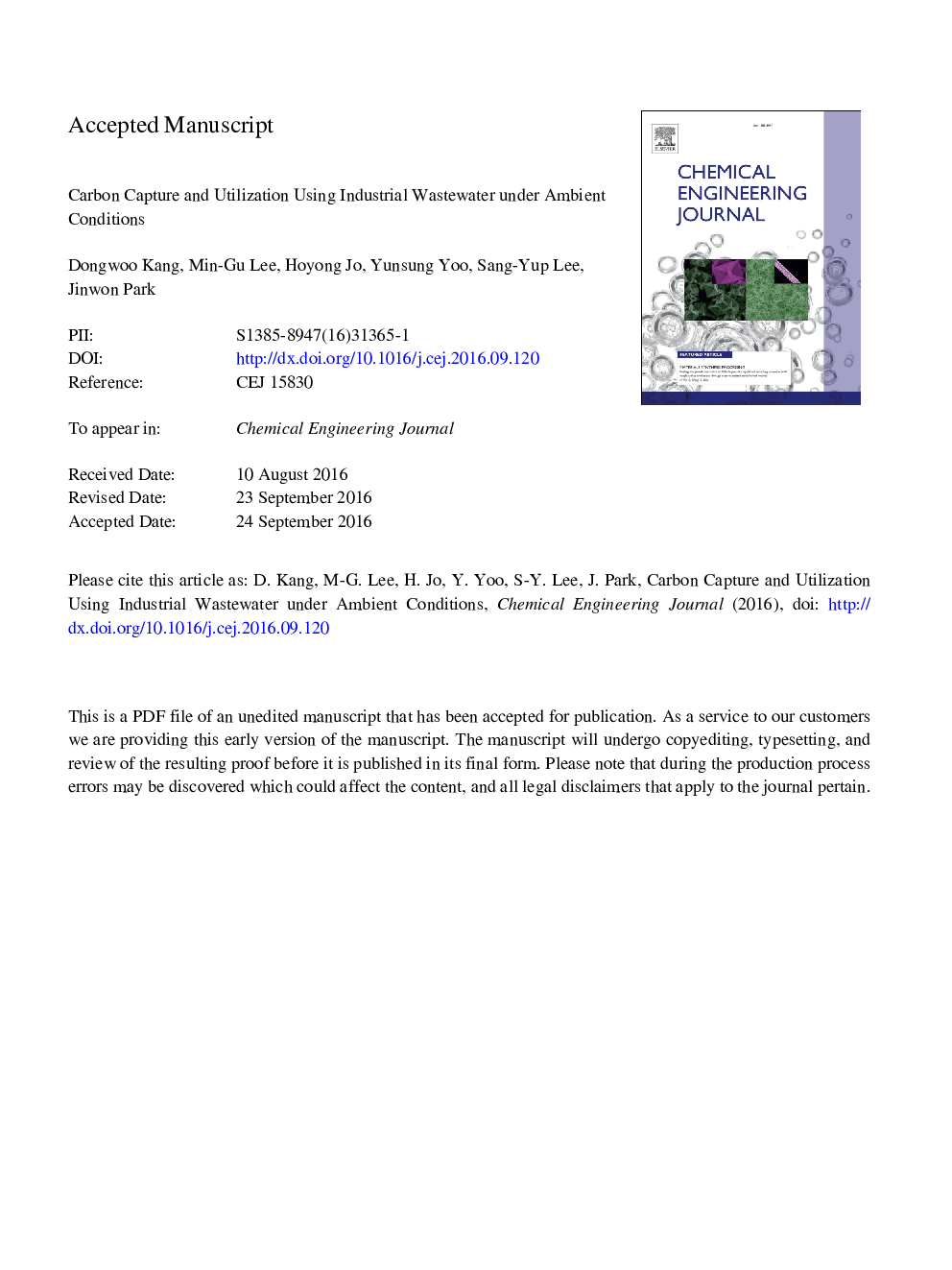| Article ID | Journal | Published Year | Pages | File Type |
|---|---|---|---|---|
| 4763743 | Chemical Engineering Journal | 2017 | 33 Pages |
Abstract
This study deals with the chemical conversion of carbon dioxide contained in industrial flue gas. Unlike previous studies, which used natural resources to obtain inorganic metal carbonate salts, this study used industrial wastewater produced from a refined salt production facility. The calcium concentration in the wastewater was 21285.737 ppm, as estimated by inductively coupled plasma-optical emission spectroscopy. Monoethanolamine, diethanolamine (DEA), and methyl-diethanolamine solutions were used as carbon dioxide absorbents, leading to CO2 loading values for the first absorption step of 0.4193, 0.3967, and 0.2814 (mol CO2/mol amine), respectively. After saturating 400 mL of each absorbent solution using 15 vol% carbon dioxide gas mixed with nitrogen, 100 mL of industrial wastewater was added to the mixture, resulting in the formation of inorganic metal carbonate salts. After a filtration step, the samples were dried and instrumental analyses including scanning electron microscopy and X-ray diffractometry were performed. The best carbon fixation performance was obtained by employing an absorbent containing 30 wt% DEA together with 100 mL of industrial wastewater.
Related Topics
Physical Sciences and Engineering
Chemical Engineering
Chemical Engineering (General)
Authors
Dongwoo Kang, Min-Gu Lee, Hoyong Jo, Yunsung Yoo, Sang-Yup Lee, Jinwon Park,
